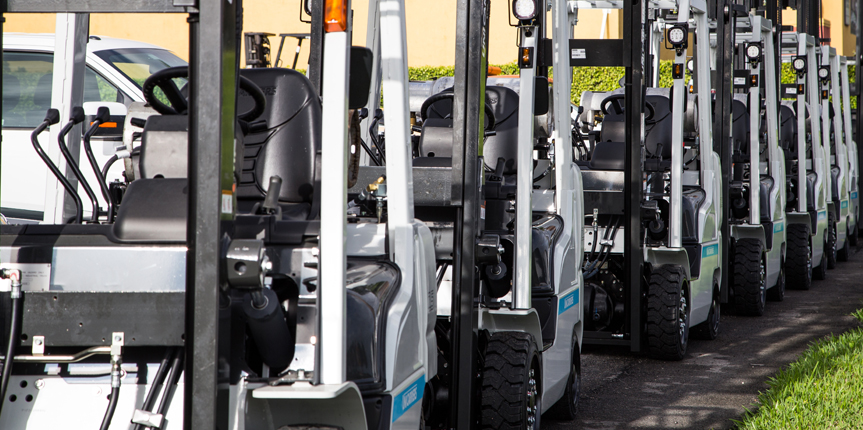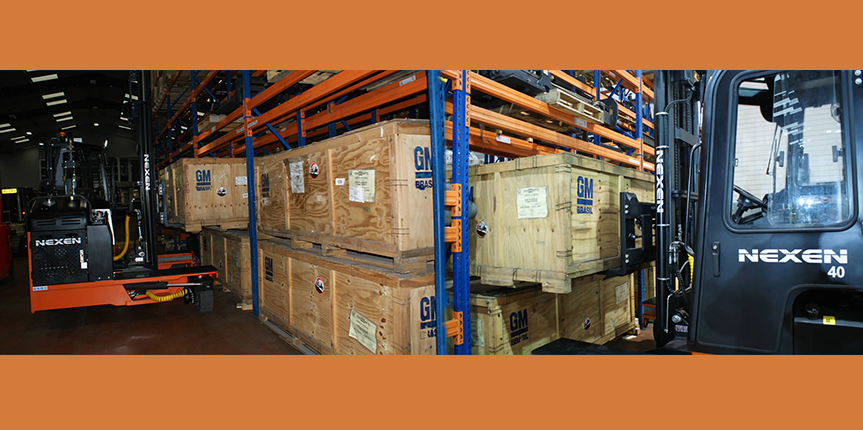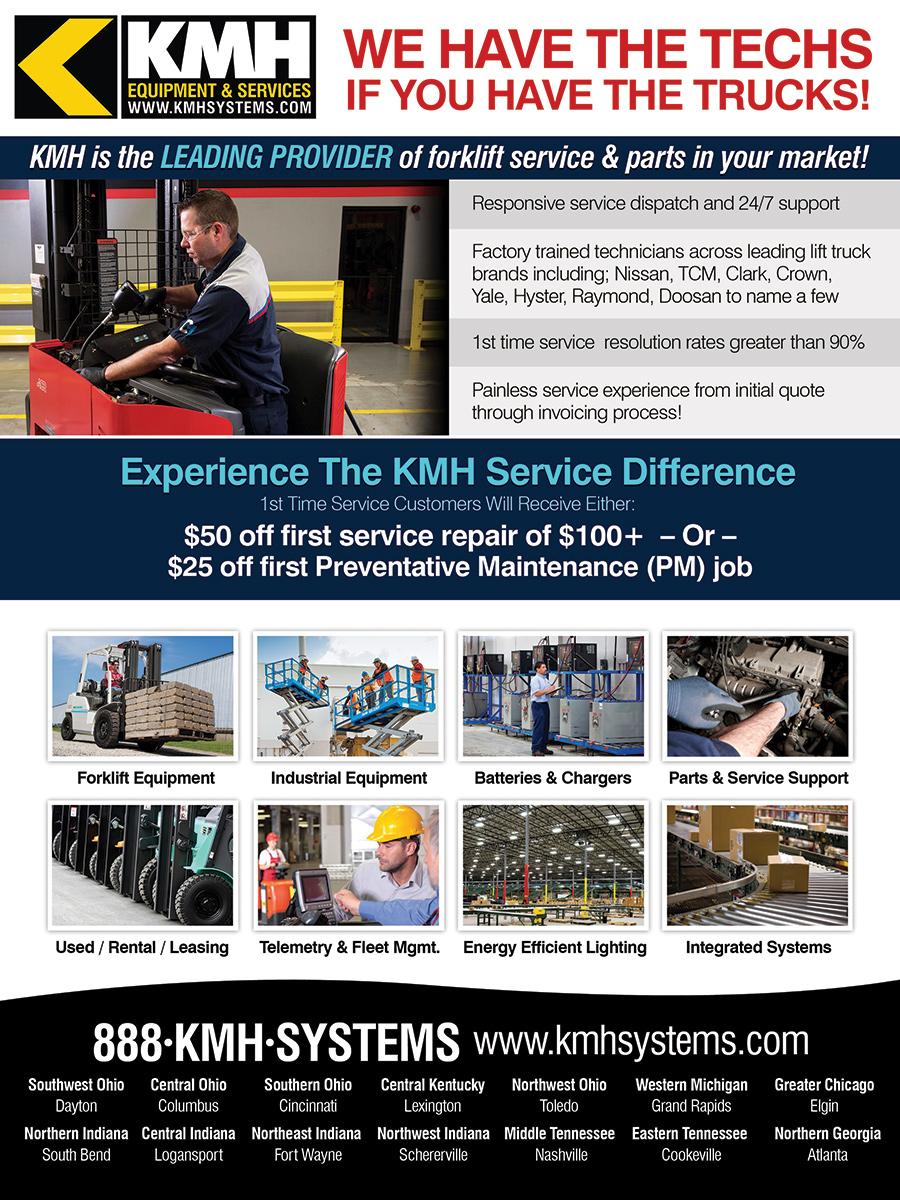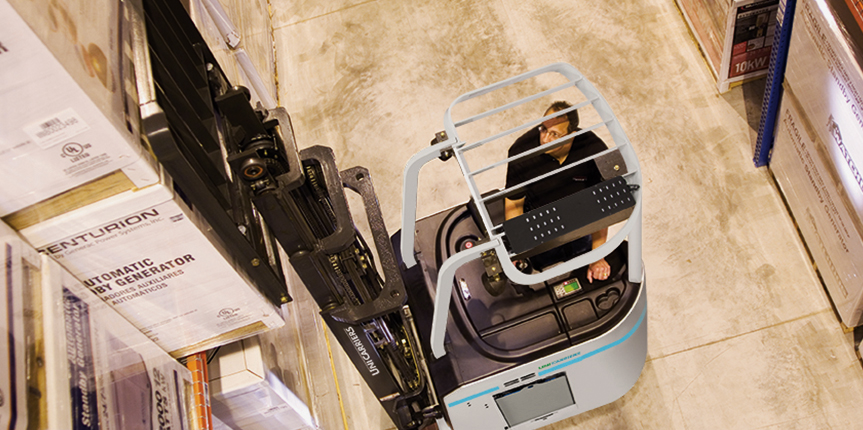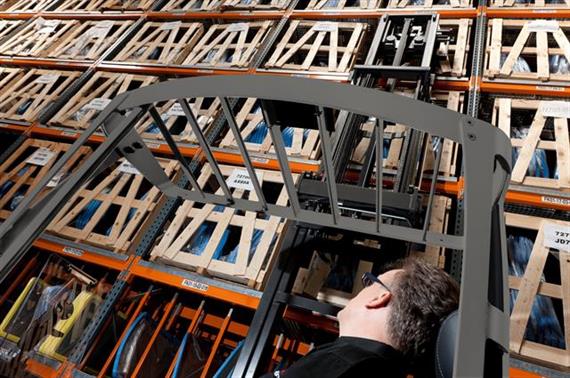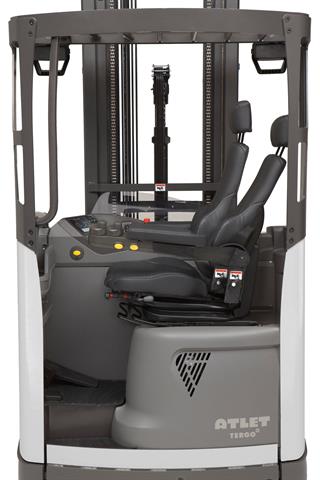With the new Tergo URS swivel reach truck from the Atlet by UniCarriers product family, the driver can recall numerous individual settings at the start of driving by a personal PIN code. For an ergonomic posture in all work stages, the backrest can be tilted backwards by up to 18 degrees. This strain is reduced by the seat tilt function. To relieve the strain on the driver’s arm and shoulder area, UniCarriers has developed the individually adjustable “floating” armrest. At the end of this mobile, sprung armrest is the patented mini steering wheel, an ergonomically optimized solution with its palm-sized functional surface.
All operating elements for the lifting functions can be reached from the right armrest in the form of mini levers and buttons.
Premium manufacturer UniCarriers also offer an integrated joystick as standard, with which all the major functions of the lift mast can be controlled. This allows the forklift to be easier to operate, saves time and increases the handling rate, as several functions can be performed simultaneously. Both armrests are height-adjustable to encourage a relaxed sitting position.
The driver travels forwards for around 70 percent and in the direction of the forks for around 20 percent of the working time. Here, the left arm is employed with moving the steering wheel for up to 74 percent of the time.

